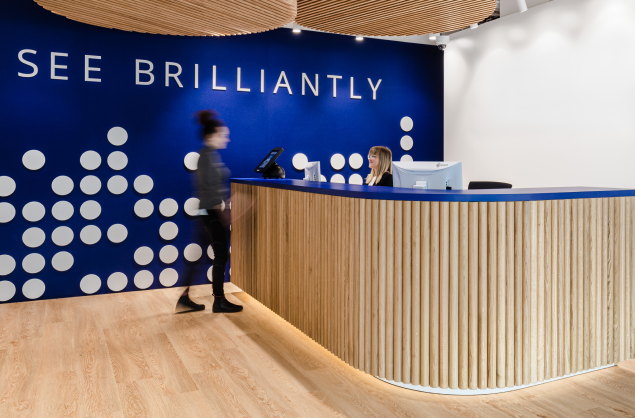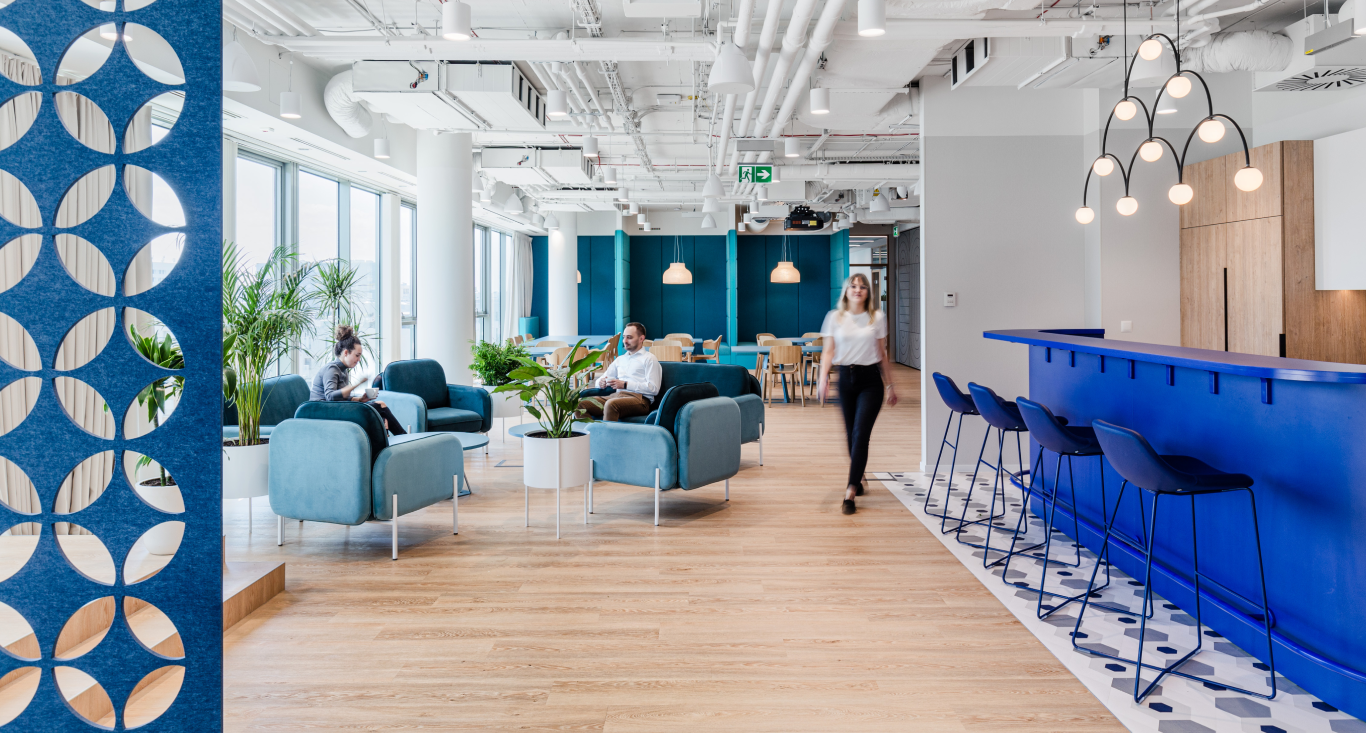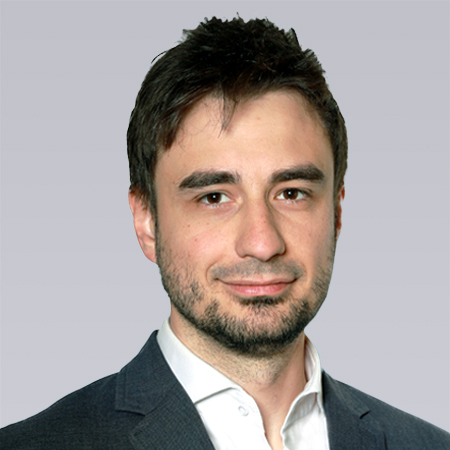Case study: Alcon | Designing workspace to connect diverse professional and cultural backgrounds
Alcon Poland’s new office brings its employees together as One Team to help people see brilliantly.
Every office design project offers opportunities to create spaces for better experiences while meeting unique requirements. This is the case when Colliers Define took on the office design for Alcon Poland. The client is a global leader in eye care dedicated to helping people see brilliantly. Alcon has the widest array of eye care offerings in the industry, with products that can treat the eye at each stage of life.
Client background and brief
Alcon’s Commercial team in Poland has been based in Warsaw since 1996. Sized for under 50 people, their workplace had a traditional layout with separate offices. The exciting opportunity to expand and refresh the space came when the company decided to locate a regional Alcon Global Services (AGS), a shared services center, in Warsaw.
AGS Warsaw’s plan was to hire almost 200 people in its first two years. The new workspace, to be designed from scratch, would house mostly young professionals with diverse skills, ranging from IT and finance to payroll and purchasing. Since AGS is serving Alcon teams across EMEA in their national languages, many of the new hires are non-Polish natives.
Main challenge:
How to combine the needs of people working for many years in the organization, who are accustomed to a closed work ecosystem, with the needs of non-employees yet – accustomed to agile methodologies and office transparency?
The brief for the new workspace is a modern, collaborative space that brings together people with the diverse backgrounds — professionally and culturally — as one team. Alcon and AGS Poland also expected their modern office with the best designs for well-being and performance to be a selling point in their recruitment for top talents.
Structured process with client engagement
We engaged Alcon Poland’s teams in a comprehensive office transformation process which consists of three stages – Define, Design and Deliver. This UX-based approach paid detailed attention to:
- the users’ needs and their involvement in the shape of the new work environment (stage Define),
- the development of the design language and conceptual interior design (stage Design),
- the execution and implementation of the space (stage Deliver).
Initially, consultants from People & Places Advisory conducted workshops and interviews with the client to gather information on the needs of the organization and the nature of their people’s work. Based on qualitative and quantitative analysis, we presented a strategy for an open and flexible work environment that responds to the change in the business operating model while improving collaboration across teams.
Next, our designers from Architecture & Planning, in consultation with the client, created a design language and interior architecture concept based on the guidelines of Alcon’s brand values.
The various perceptions of the office were achieved through the application of different forms of expression (colors, materials, patterns, etc).
We also carried out zoning of the office to modulate the intensity of the visual language – from minimalist workspaces to expressive common areas. The spatial arrangements corresponded to the workplace strategy.
In the last stage, our Design & Build of general construction team led the fit-out works – from cost estimation and value engineering (which helped avoid unnecessary costs) to managing the entire construction and on-site works. The seamless collaboration of our in-house integrated teams created cohesive, impactful workspaces.
Drivers for the designs
The interior design was based on the client’s foundational principals: Customers, Innovation and People. Below are some examples of how Alcon’s principals were incorporated into the spaces.
Customer-driven design
The “Alcon Training Center” is a unique space…The “Alcon Training Center” is a unique space for running educational projects for eye-care professionals. It consists of the Eye Research Center, a wet-lab, conference rooms and a relaxation area.
Innovation-driven design
Specially designed flexible meeting spaces…Specially designed flexible meeting spaces for planned and ad-hoc meetings. The acoustic design is also conducive for conversation and collaboration.
People-centric design
The workstations are equipped with ergonomic…The workstations are equipped with ergonomic desks and chairs. Hot-desk system is available for those working in hybrid mode. For tasks that cannot be performed in open workspaces, there are booths, conference rooms and alcoves for meetings. And there are plenty of spaces for rest and relaxation: kitchens, coffee corners, game rooms, roof-top terrace.
From the very beginning of the process, our team of engineers who carried out the execution work and managed the construction worked closely with architects and consultants responsible for the design concept and work environment strategy. This in-house Colliers team helped us to take the responsibility off the Client and deliver the results shown in the pictures without any defects, on time and within budget. Thanks are also due to our building consultant – Jaroslaw Szulc from Colliers Building Construction department.
The most interesting challenge was to combine different generations in one hybrid working model, which was completely new for the company. The two worlds that were merging in the space had to go through a process of change based on the work environment strategy developed with the client.
Project authors:
Colliers Define team:
- People & Places Advisory: Dorota Osiecka, Grzegorz Rajca
- Architecture & Planning: Aleksandra Adamczyk, Monika Gut-Kinzi, Zuzanna Jaszczuk, Jan Szymuś
- Design & Build: Magdalena Dobrodziej, Aneta Kaczmarek, Jakub Nurczyński, Grzegorz Roman, Łukasz Żychowski
Colliers’ Building Consultancy: Jarosław Schulz




